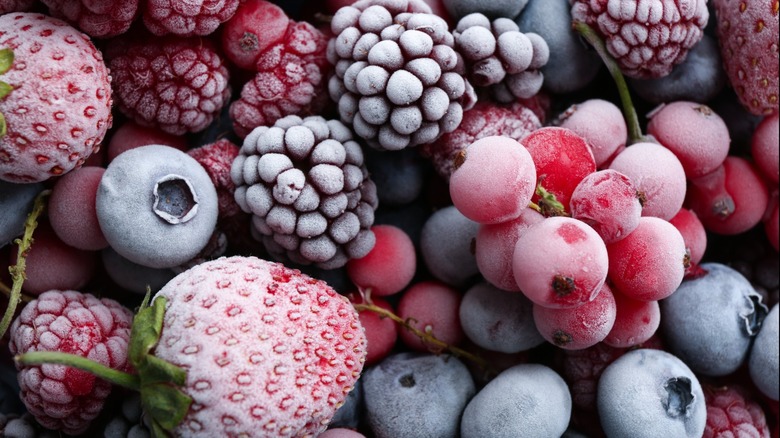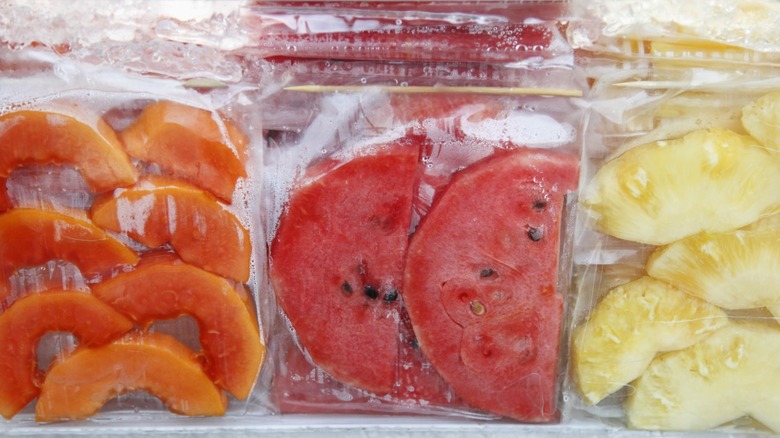Can Frozen Fruit Truly Go Bad?
Freezing food has a plethora benefits and is one of the best preservation methods. Whether you're freezing seasonal produce at its peak ripeness, raw meat or fish, prepared meals or snacks, or even certain baking ingredients, shelf life is extended and becomes a convenient way to have ingredients on hand when you need them.
While any frozen food can't technically "go bad" in the way that unpreserved fresh food can from bacteria growth, the quality of frozen food will deteriorate over time. The other instance that would potentially allow frozen food to go bad is if improper freezing procedures were executed while first preserving something. This includes if a food item is not continuously or initially frozen at 0 degrees Fahrenheit or less and is not stored in a sealed freezer-grade container or sealable freezer bag to keep air out. In the case of freezing fruit, all of these freezing principles apply, but a a few more special and creative hacks can be implemented.
You can also freeze fruit according to whatever your intended purposes are at a later use. Fruit that's intended to be used for desserts can be froze with sugar or syrups. For fruit desired for regular eating, unsweetened fruit juice, pectin syrup or types of acids will help prolong the fruit's texture an color for regularly eating after thawing. There are also freezing techniques that are can be useful with certain fruits. Let's get into these methods so you can take advantage of preserving your favorite fresh and seasonal fruits.
Methods and techniques for prolonged storage of frozen fruit
Properly frozen fruit can keep its flavor, texture, and appearance intact for up to a year. To successfully keep frozen fruit from going bad before this time frame, first make sure the fruit you're going to freeze has been washed, completely dried, and is at peak ripeness, while also not showing any early signs of molding. For fruits naturally found whole or with a rind or skin, make sure they're peeled and chopped into your desired size. If you're planning to use the frozen fruit in desserts, you can create a sweetened fruit pack where you'll toss the fruit in either granulated sugar or syrup, let it rest for 15 minutes, and then place in an airtight container or bag to freeze.
For a fruit pack that's being frozen to later eat regularly, you can create an unsweetened fruit pack either with unsweetened juice or fruit pectin added to the fruit so that once it's unthawed, the juice or pectin will have helped preserved the fruit's fresh-looking color and texture. Ascorbic or citric acid can be applied to fresh fruit prior to freezing to also aid in a fresher unthaw. Lastly, if you create sweetened fruit packs, a quality airtight container made of plastic or glass is best, while sealable freezer food storage bags work best for unsweetened fruit packs. Additionally, if you don't want your fruit to stick together once frozen, you can first freeze all individual pieces of fruit (sweetened or not) spread out on a baking tray and once frozen, remove from the tray and place into your container or bag.

